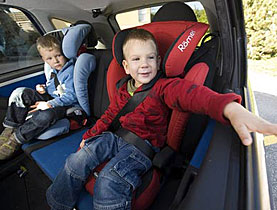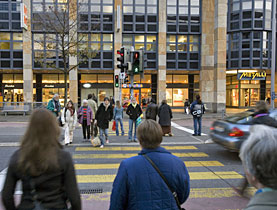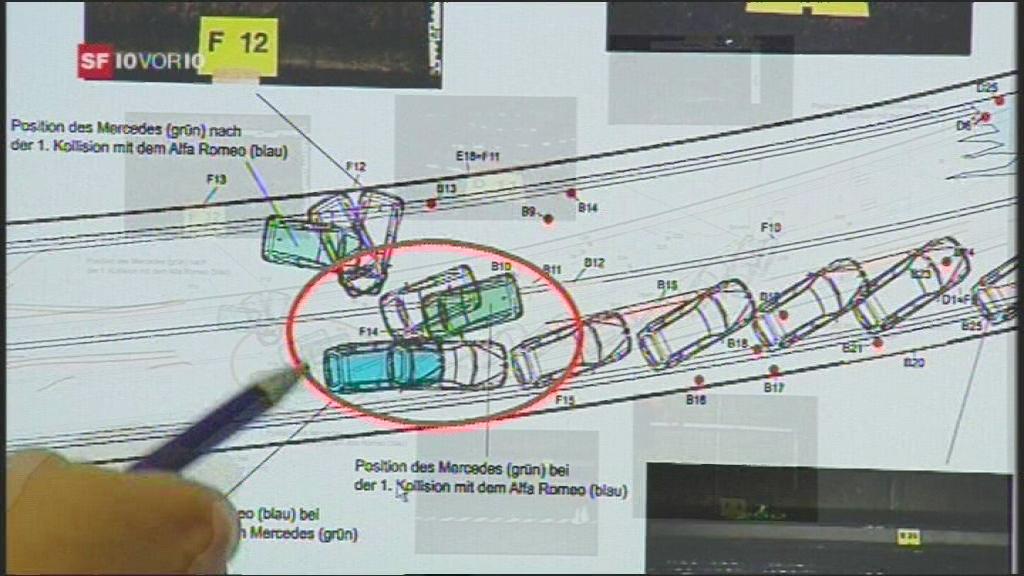Child’s death raises questions about car seats

A tragic accident in which a child died after unbuckling a car seat and falling into the road has highlighted the limitations of such safety devices.
Days after the incident the Swiss government tightened rules governing car seats, approving plans to make them compulsory for children up to to 12 years old. They are presently only required for children aged up to seven.
The Touring Club Switzerland (TCS) said the death of the three-year-old in Zurich was a “really sad situation” but was the result of a highly unusual sequence of events.
According to police, the child unbuckled the seat, climbed across his two siblings sitting in the back seat, opened the car door, fell into the road and was hit by another car. The youngster was taken to hospital but died soon afterwards.
“I never heard of an accident like this before. The possibility that it could be repeated is really low – one in a billion,” TCS child safety expert Arthur Keller told swissinfo.ch.
But it is a mistake to assume from the start that car seats guarantee safety, he explained.
Under a United Nations Economic Commission for Europe ruling, car seats must be manufactured in such a way that children as young as two can open the buckle in case of an accident or fire. The buckles must also be made to open in one swift movement. As a result Switzerland cannot sell car seats that only adults can open.
It is down to adults to ensure that the child keeps the car seat belt fastened, Keller said.
“For sure the responsibility lies with the driver or the parents. It is the parents’ job to say, ‘stop that, keep the buckle on’. If there is no reaction from the child then they have to stop the car safely.”
Involve children
But incorrect use of seats is also a problem. TCS checks found that one in three children is not correctly buckled in or that the child seat has not been installed properly in the car.
Bearing in mind that most children dislike being put into the seats, he recommends involving children when choosing the seat and having them help pick the colour.
To improve safety child locks should also be used on car doors.
A Federal Roads Office proposal to make car seats compulsory for children up to age 12 or those who are under 1.5 metres tall was approved by cabinet on Wednesday. The new measures will be effective from April 1, 2010.
Antonello Laveglea of the Federal Roads Office said the proposal was put forward in order to fall in line with the rest of Europe. Tests carried out by the TCS had also shown that car seats were safer than regular seat belts for children aged 12 and under.
The initiative had the backing of the TCS, which for the past 30 years has advised parents to use the seats for children aged 12 and below.
The Swiss Council for Accident Prevention says the death of the three-year-old in Zurich underlines the importance of belting up properly. Its “Belt Up” campaign on seatbelts has highlighted child safety and says that drivers do “not always make children as safe as possible”.
According to government statistics from 2007, one in six children is not buckled in at all.
Jessica Dacey, swissinfo.ch
Switzerland: Presently children under the age of 7 must travel in a car seat and children aged 7-12 must wear a seat belt. After April 1, 2010 car seats will be compulsory for children aged up to 12.
Germany: Car seats are compulsory for children under the age of 12 or less than 1.5m tall.
Austria: Children under the age of 14 and less than 1.5m tall must travel in a car seat. Children over 1.35m tall can use a seat belt instead but the belt must not touch their neck.
France: Car seats are compulsory for children under 10.
In Switzerland there were 108 children under 4 injured in car accidents in 2008. Another 163 were aged 5-9 and 190 were 10-14.
There was one child aged 10-14 killed in a car accident in 2008.
In 2007 police registered 162 fatalities from road traffic accidents and 156 in 2008. There were 14,235 injuries in 2007 and 13,429 in 2008.
Rear seat belt use in adults has gone up from 32% in 1995 to 68% in 2009. In drivers it rose from 35% in 1980 to 87% in 2009.
(Source: Swiss Council for Accident Prevention)

In compliance with the JTI standards
More: SWI swissinfo.ch certified by the Journalism Trust Initiative




You can find an overview of ongoing debates with our journalists here . Please join us!
If you want to start a conversation about a topic raised in this article or want to report factual errors, email us at english@swissinfo.ch.